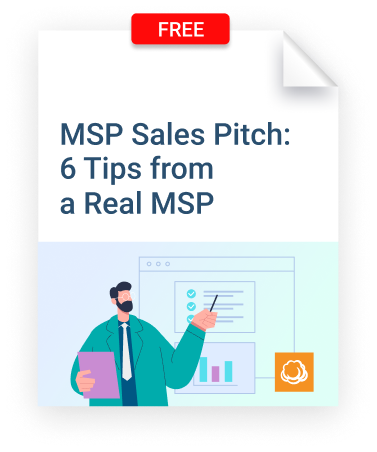For many MSPs, it doesn't make sense to try to be all things to all people. Instead, MSPs often choose a certain vertical (or multiple verticals) to specialize in. For instance, an MSP might choose to focus on the automotive, healthcare or real estate industries, to name just a few example verticals.
Focusing on certain verticals helps you get to know your prospective new clients even before you have met them. When you can introduce yourself as having specific knowledge of that industry’s challenges with the solutions you have developed, you elevate your relevance and perceived value for potential clients.
Further reading Why MSPs Must Understand Industry-Specific Risks
So, how do you choose which verticals to focus on? Keep reading for some tips.


Selecting a target vertical for MSPs
Focus on industries you know best.
Examine your own interests and your past business life. For example, if your background is in retail, banking or healthcare, you may already have the business acumen needed to cater to the IT needs of companies in those industries. You will also be in a better position to demonstrate deep knowledge of and passion for your client’s business.
Plus, having experience in the industry means you can find your first clients just by searching through the contacts list from your previous business-connections.
Leverage partnerships and alliances
Do you have partners -- or can you gain partners -- who will help you gain entry to a new vertical? If so, take advantage of these relationships to help select a vertical. For example, if you are currently working with a healthcare or legal client who places a priority on the privacy-related IT services you deliver, use those services to help gain other clients in the same vertical.
Don’t be afraid of nonprofits and charities
Nonprofits often have no interest in building and expanding an in-house IT shop. They generally believe their best course is to focus on their core mission and outsource operations to a trusted managed service provider. Thus, this can be a good vertical for MSPs to focus on. Consider building a collection of these cost-conscious clients that are not likely to jump to another MSP as long as you meet their needs reliably.
Consider your region.
The businesses that thrive in your geographic region will often be more open to giving a local MSP their business, rather than giant cloud providers in other cities. You have a local advantage and can give personalized service via your proximity to decision-makers. For example, a historic automotive assembly region may have several potential clients close to you in the parts-supply chain. Agricultural centers, university towns, and established military communities are also likely to have secondary surrounding businesses that need IT services from MSPs.
Look for greenfield opportunities.
Many regions today are working to convert their workforces from legacy industries to new technology centers of excellence, like R&D and technical support call centers. Thus, MSPs can watch for changes in culture and laws that foster new industries close to them, like medical marijuana, green energy or biotechnology, and then focus on those verticals.
Become a student of your MSP vertical
No matter which verticals you select, the most important tip is always to be learning about your specialized vertical. Dedicate time and energy to getting to know the workflow, regulations, common IT requirements and CEO priorities of the industry. You can do this via several methods, including reading industry newsletters, government statistics, blogs, conferences and whitepapers, and joining support groups.
Know your customer before you meet them, discuss with confidence requirements like their:
- Tolerance for service interruptions
- Which transactions and databases are critical
- Disaster Recovery ambitions
- Common network and security requirements
- Regulatory constraints and opportunities
- Depth of skills of current IT internal support
- Backup and data retention regulations
- Migration status onto cloud services
- Discipline for software updates and maintenance
- Their comfort level out-tasking visibility and control to an MSP
- Product line roadmaps and IT growth expectations
- Expected critical B2B relationships
- Customer experience and SLA expectations
- Strategic priority on IT stability and flexibility
Picture your IT services being a cog in the wheel serving your client’s suppliers, workforce, manufacturing, customers and digital interface to the economy. Talk to not only to top executives but to the middle managers that have a mandate to get daily operations done. They will share the pain points that you must learn and resolve. In this way, your sales process and marketing messages will be more focused and efficient.
Delighting the first clients in your specialized vertical should pave the way for subsequent similar but larger MSP wins with less effort.






